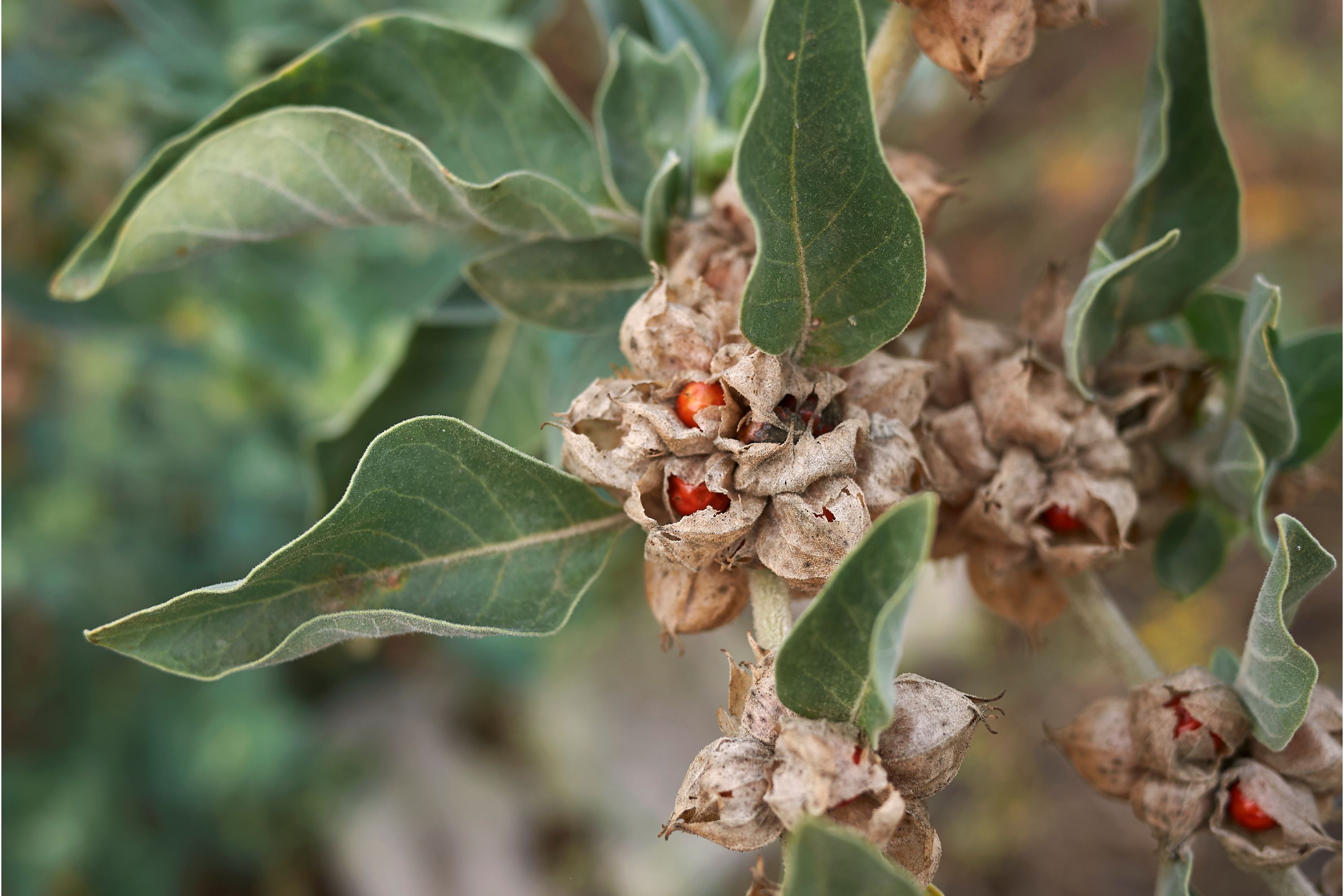Ashwagandha
(Withania somnifera)

Description
Withania somnifera, known commonly as ashwagandha or winter cherry, is an annual evergreen shrub in the Solanaceae or nightshade family that grows in India, the Middle East, and parts of Africa. Several other species in the genus Withania are morphologically similar. Although thought to be useful as a medicinal herb in Ayurveda and sold in many countries as a dietary supplement, there is insufficient scientific evidence that it is safe or effective for treating any disease. This species is a short, tender perennial shrub growing 35–75 cm (14–30 in) tall. Tomentose branches extend radially from a central stem. Leaves are dull green, elliptic, usually up to 10–12 cm (3.9–4.7 in) long. The flowers are small, green and bell-shaped. The ripe fruit is orange-red. The species name "somnifera" means "sleep-inducing" in Latin. The name "ashwagandha" is a combination of the Sanskrit words 'ashva', meaning horse, and 'gandha', meaning smell, reflecting that the root has a strong horse-like odor. Withania somnifera is cultivated in many of the drier regions of India. It is also found in Nepal, Sri Lanka, China, and Yemen. It prefers dry stony soil with sun to partial shade. To propagate it can be grown from seed in the early spring, or from greenwood cuttings in the later spring. Withania somnifera is prone to several pests and diseases. Leaf spot disease caused by Alternaria alternata is the most prevalent disease, which occurs in a severe form in Punjab, Haryana, and Himachal Pradesh. A decline in the concentration of its secondary metabolites occurs by leaf spot disease. A treehopper feeds on the apical portions of the stem, making them rough and woody in appearance and brown in colour. The carmine red spider mite (Tetranychus urticae) is the most prevalent pest of the plant in India. In recent years, this plant has been serving as a new reservoir host for an invasive mealybug species Phenacoccus solenopsis. The main phytochemical constituents are withanolides – which are triterpene lactones – withaferin A, alkaloids, steroidal lactones, tropine, and cuscohygrine. Some 40 withanolides, 12 alkaloids, and numerous sitoindosides have been isolated. Withanolides are structurally similar to the ginsenosides of Panax ginseng, leading to a common name for W. somnifera, "Indian ginseng".
Taxonomic tree:







